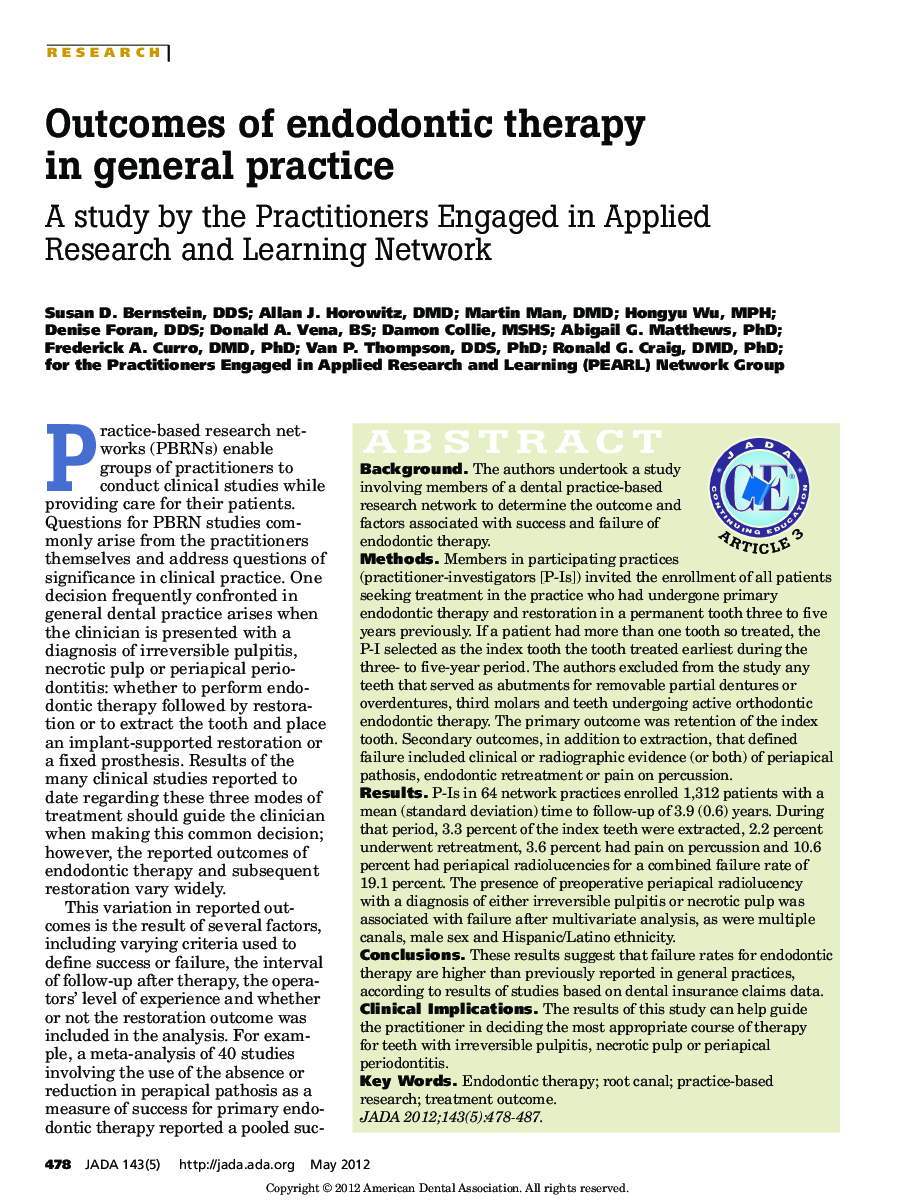| Article ID | Journal | Published Year | Pages | File Type |
|---|---|---|---|---|
| 3139114 | The Journal of the American Dental Association | 2012 | 10 Pages |
BackgroundThe authors undertook a study involving members of a dental practice-based research network to determine the outcome and factors associated with success and failure of endodontic therapy.MethodsMembers in participating practices (practitioner-investigators [P-Is]) invited the enrollment of all patients seeking treatment in the practice who had undergone primary endodontic therapy and restoration in a permanent tooth three to five years previously. If a patient had more than one tooth so treated, the P-I selected as the index tooth the tooth treated earliest during the three- to five-year period. The authors excluded from the study any teeth that served as abutments for removable partial dentures or overdentures, third molars and teeth undergoing active orthodontic endodontic therapy. The primary outcome was retention of the index tooth. Secondary outcomes, in addition to extraction, that defined failure included clinical or radiographic evidence (or both) of periapical pathosis, endodontic retreatment or pain on percussion.ResultsP-Is in 64 network practices enrolled 1,312 patients with a mean (standard deviation) time to follow-up of 3.9 (0.6) years. During that period, 3.3 percent of the index teeth were extracted, 2.2 percent underwent retreatment, 3.6 percent had pain on percussion and 10.6 percent had periapical radiolucencies for a combined failure rate of 19.1 percent. The presence of preoperative periapical radiolucency with a diagnosis of either irreversible pulpitis or necrotic pulp was associated with failure after multivariate analysis, as were multiple canals, male sex and Hispanic/Latino ethnicity.ConclusionsThese results suggest that failure rates for endodontic therapy are higher than previously reported in general practices, according to results of studies based on dental insurance claims data.Clinical ImplicationsThe results of this study can help guide the practitioner in deciding the most appropriate course of therapy for teeth with irreversible pulpitis, necrotic pulp or periapical periodontitis.
